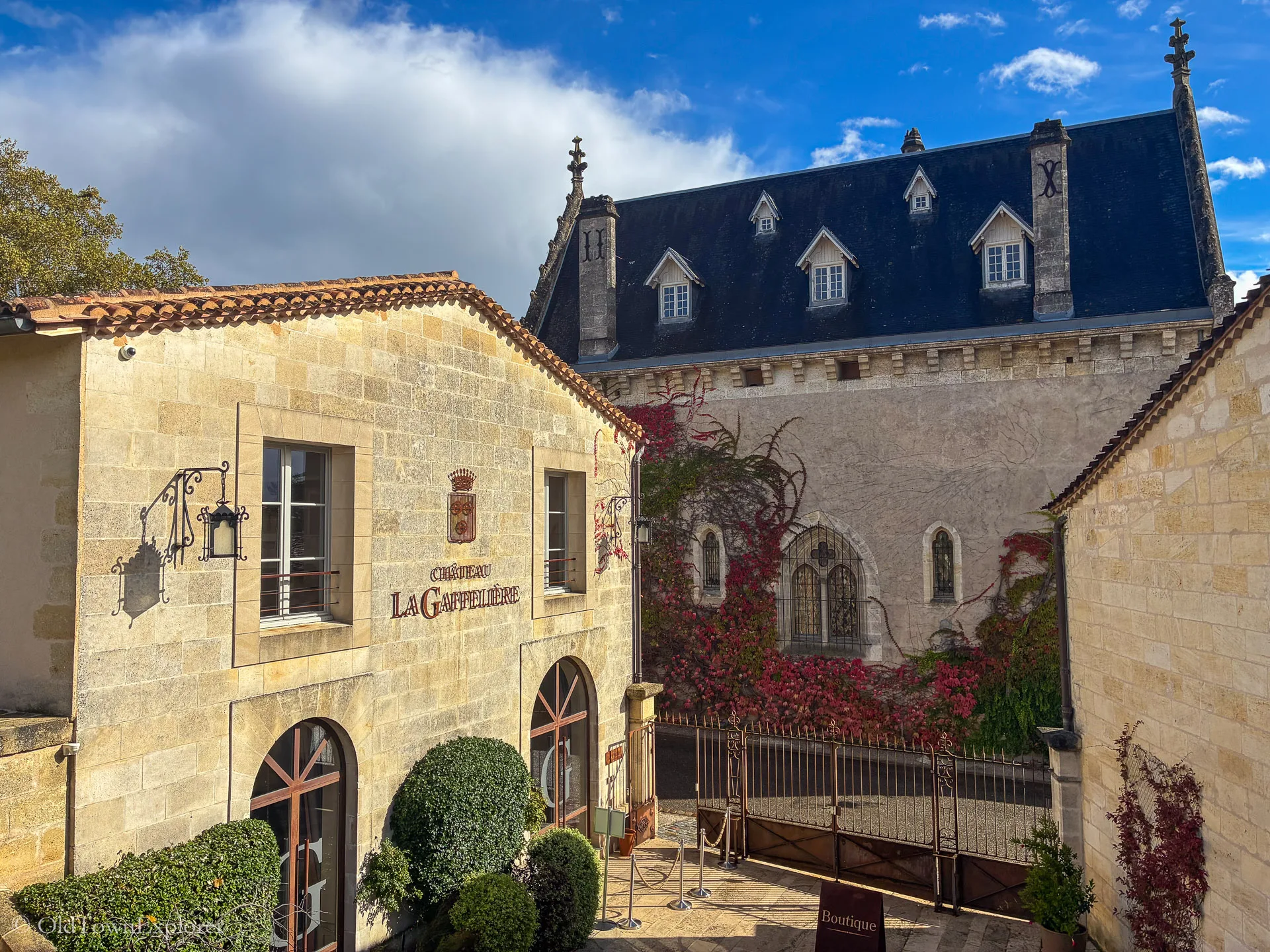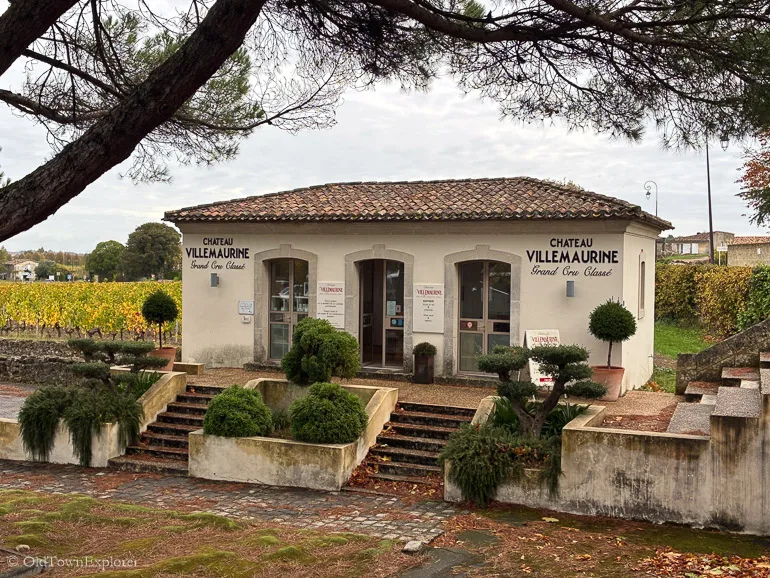Discover Wineries in Saint‑Émilion: Wine Tastings, Tours & Tips
Nestled atop a limestone plateau in southwestern France, Saint‑Émilion is one of the world’s most celebrated wine villages—and a UNESCO World Heritage Site. Known for its Merlot-driven red blends, the region is part of Bordeaux’s Right Bank and home to centuries-old vineyards, cobbled lanes, and underground cellars carved from stone.
The Saint‑Émilion wine appellation includes both the town and its surrounding vineyards, many of which are within walking or cycling distance. This accessibility, combined with the area’s status as a Grand Cru Classé region, makes Saint‑Émilion ideal for travelers seeking to visit prestigious châteaux without needing a car.
We visited Saint‑Émilion during our month-long stay in Bordeaux, taking advantage of its quick train connections for easy day trips into the countryside. The combination of accessible vineyards, centuries of winemaking tradition, and a remarkably preserved medieval village makes Saint‑Émilion one of the best introductions to Bordeaux’s Right Bank. In this guide, we’ll explore the region’s wineries, tasting experiences, and practical tips to help you plan your own visit with confidence.
This website contains affiliate links that may earn us a small commission at no additional cost to you.
Top Wineries You Can Visit Near Saint‑Émilion
Saint‑Émilion’s wine region includes hundreds of châteaux ranging from historic Premier Grand Cru Classé estates to small organic producers with limited production. Many of these wineries are open to the public for tastings, cellar visits, and vineyard tours. In the list below, you’ll find a mix of well-known classified estates, boutique vineyards, and walkable options near the village—organized to help you choose based on style, location, or experience level.
Grand Cru & Classified Estates

Château La Gaffelière
One of the oldest family-run estates in the region and classified as Premier Grand Cru Classé B. Just outside the village, it offers elegant tastings and historic insight.

Château Villemaurine
Address: 23 Villemaurine-Sud, 33330 Saint-Émilion
A short walk from the village center, this Grand Cru Classé estate is known for its spectacular monolithic underground cellars and modern visitor experience.
Château La Dominique
Modern architecture and art-filled spaces meet classic winemaking. Offers tours, tastings, and a rooftop restaurant overlooking the vineyards.
Château Faugères
A Grand Cru Classé estate with a contemporary gravity-flow winery and sweeping valley views.
Château Soutard
Within walking distance of the town, this estate offers immersive visits including blending workshops and vintage tastings.
Château Troplong Mondot
A Premier Grand Cru Classé estate perched on a hilltop. Features fine dining and a luxurious guesthouse alongside its wine program.
Organic, Small & Boutique Producers
Château Coutet
Certified organic since 2012, this family-run estate is just a 15-minute walk from the center. Known for traditional methods and Merlot-forward blends.
Château Mangot
Run by a young winemaking couple, this certified organic estate blends innovation with heritage and is located about 10 km east of Saint‑Émilion.
Château Franc Mayne
Offers intimate visits and tastings in its underground limestone cellar. Also has boutique accommodations on-site.
Château Guadet
Located just a few steps from the village center, Guadet is a certified biodynamic Grand Cru Classé estate.
Château Ambe Tour Pourret
About 800 meters from the village, this estate offers food and wine pairing workshops and an elegant tasting room.
Wine Tours & Experiences
While it’s possible to explore Saint‑Émilion’s wine scene independently, joining a guided experience can offer deeper insight into the region’s terroir, traditions, and tasting techniques. From casual walk-in cellars to full-day chauffeured tours, Saint‑Émilion caters to every level of wine curiosity. Below, we’ve outlined the most common formats—from self-guided stops to private vineyard lunches—to help you find the experience that suits your travel style.
Self-Guided Tastings
Many estates offer walk-in tastings, but the best experiences often require a reservation. If you’re short on time or prefer to explore independently, these two nearby options are ideal:
- Château Villemaurine – Just a few minutes’ walk from the village center, this Grand Cru Classé estate offers one of Saint‑Émilion’s most memorable visits, featuring underground cellars carved into the limestone and tastings of its elegant Merlot-based wines.
- Château La Gaffelière – A Premier Grand Cru Classé B estate located just outside the village, combining centuries of winemaking history with refined, structured wines that represent the essence of Saint‑Émilion’s Right Bank style.
Small-Group Tours
Organized tours are a convenient way to visit multiple wineries without needing a car. These often include hotel pickup, a local guide, and visits to both Grand Cru Classé and boutique estates.
Private Tours & Custom Experiences
For a more tailored approach, private guides and driver-led tours are available. These are ideal for serious collectors, couples, or families looking to explore at a slower pace.
Food & Wine Pairing Workshops
Several wineries offer culinary experiences to accompany their wines:
Château Ambe Tour Pourret – Cooking classes and pairing menus
Château Troplong Mondot – Michelin-starred restaurant on site
Self-Guided Wine Tasting Tour in Saint‑Émilion
Visiting Saint‑Émilion’s wineries without a car is not only possible—it’s surprisingly easy if you’re based in central Bordeaux. This self-guided itinerary is designed around Bus Line 4617, which offers direct access from the city center to the village without the extra walk required by the train. With two top-tier tastings, time for lunch and sightseeing, and a relaxed return before dinner, this one-day plan is ideal for travelers who prefer flexibility over group tours.
Morning Departure from Bordeaux
Bus Line 4617
- Departure: 09:00 from BORDEAUX Quinconces Orléans
- Arrival: 10:00 at ST EMILION Bourg
This route drops you just outside the village, an easy 10-minute walk to your first tasting.
Tasting 1: Château Villemaurine
- Time: 10:30
- Address: 23 Villemaurine-Sud, 33330 Saint‑Émilion
- Duration: 1 to 1.5 hours
A short walk from the bus stop, Château Villemaurine offers a fascinating tour of its monolithic underground cellars followed by a tasting of its Grand Cru Classé wines. Book in advance to secure an English-speaking guide.
Lunch & Sightseeing in Saint‑Émilion
After your tasting, explore the medieval village. Options for lunch include:
- L’Envers du Décor – A wine-centric bistro with seasonal dishes
- Comptoir de Genès – Casual and regional, ideal for a light lunch
- Grab a pastry or picnic supplies at one of the bakeries for a relaxed park meal
Use your extra time to visit landmarks like the monolithic church, cloisters, or one of the panoramic viewpoints overlooking the vineyards.
Tasting 2: Château La Gaffelière
- Time: 14:00
- Address: 626 Route de la Gare, 33330 Saint‑Émilion
- Duration: 1 to 1.5 hours
Just outside the village, Château La Gaffelière is a Premier Grand Cru Classé B estate with over four centuries of history. Tours include vineyard walks and tastings in a beautifully restored setting. It’s a gentle downhill walk from the village center.
Return to Bordeaux
- Bus Line 4617
- Departure: 16:10 from ST EMILION Bourg
- Arrival: 17:10 at BORDEAUX Quinconces Orléans
You’ll be back in time to enjoy dinner in Bordeaux or continue exploring the city’s wine bars.
How to Get to Saint‑Émilion from Bordeaux
Saint‑Émilion is one of the most accessible day trips from Bordeaux, with multiple transport options connecting the city to the vineyards. Whether you prefer the convenience of a guided tour, the flexibility of a rental car, or the ease of a train or bus ride, reaching this historic wine village is straightforward. Here’s a breakdown of how to get from Bordeaux to Saint‑Émilion—no matter your travel style or budget.
By Train
Direct regional trains run from Bordeaux’s Gare Saint-Jean to Saint‑Émilion (approx. 35–40 minutes). The train station is about 2 km from the village—walkable but uphill.
By Bus
Bus Line 4617 connects Quinconces Orléans in central Bordeaux to Saint‑Émilion.
By Car
Driving offers flexibility to visit remote châteaux. Paid parking lots are available near the village center.
By Tour
Many Bordeaux-based tour companies offer round-trip transport, wine tastings, and expert guides.
Tips for Visiting Wineries in Saint‑Émilion
Planning a trip to Saint‑Émilion’s wineries doesn’t require a car or deep knowledge of Bordeaux—but a few practical tips can make your visit much smoother. This section covers how to get there, where to stay, local etiquette, and what to expect when booking tastings or bringing wine home. It’s everything you need to know before setting off into the vineyards.
Where to Stay
In the Village: Guesthouses and boutique hotels offer charm and easy access to wine bars, restaurants, and nearby wineries.
In the Vineyards: Some wineries host guests on-site, offering immersive experiences in tranquil vineyard settings.
In Bordeaux: Staying in Bordeaux provides more accommodation options, nightlife, and access to city-based tours. It’s ideal for those combining multiple wine regions.
Local Wine Etiquette
Tastings are usually not free. Expect a fee (€5–€30), often waived with bottle purchase.
Be on time for booked visits—châteaux run on fixed schedules.
Spitting is standard during tastings, especially if you’re visiting more than one estate.
Wine Shipping & Purchases
Most estates and shops offer worldwide shipping.
Bottles can also be packed for air travel—ask about protective sleeves or wine shippers.
Best Time to Visit & Seasonal Highlights
The timing of your visit can shape your entire experience in Saint‑Émilion. Each season brings a different pace to the vineyards—from quiet cellar tastings in winter to the energy of harvest in early autumn. Whether you’re looking for warm weather, fewer crowds, or a chance to see the grape harvest in action, this seasonal breakdown will help you plan your trip around what matters most to you.
Spring (April–June)
- Vineyards begin to bloom, and the town reawakens after winter.
- Ideal for guided tours—fewer crowds, comfortable temperatures.
- Many estates reopen for full visitor programs by mid-April.
Summer (July–August)
- High season for tourism; advance bookings are essential.
- Vineyards are lush, and wine bars stay open late.
- Expect warm days and a lively village atmosphere.
Harvest Season (September–Early October)
- The most dynamic time to visit for wine lovers.
- Some châteaux reduce or pause public visits due to grape picking and fermentation, but others offer behind-the-scenes harvest tours.
- Autumn colors add to the landscape’s beauty.
Autumn (Mid–October–November)
- Crisp air, golden vines, and fewer tourists.
- A good time for deeper tastings and relaxed touring.
- Some wineries close for maintenance or restocking—check ahead.
Winter (December–March)
- Quiet season with limited estate openings.
- Best for travelers focused on history, architecture, and uncrowded strolls through the village.
- Not ideal for vineyard access but possible to enjoy indoor tastings at select estates.
FAQs About Wineries in Saint‑Émilion
Do you need a reservation to visit a winery in Saint‑Émilion?
Yes. Most châteaux require advance bookings, especially for tours or guided tastings. Some allow same-day bookings or walk-ins, but it’s safer to plan ahead.
How much do tastings cost?
Expect to pay €5–€30 depending on the estate and tasting format. Some fees are waived with purchase.
Can you walk to wineries from the village center?
Yes. Several wineries are within a 10–15 minute walk, including Château Guadet, Château Villemaurine, and Château Ambe Tour Pourret.
What types of wine are produced in Saint‑Émilion?
Mainly Merlot-based red blends, often with Cabernet Franc. White wines are not permitted under the appellation rules.
Is it possible to visit Saint‑Émilion without a car?
Absolutely. You can reach the town by train or bus and visit multiple wineries on foot or by booking a local tour.
When is the best time to visit wineries?
Late spring to early fall is ideal. Harvest season (September–early October) is exciting but may limit access due to vineyard activity.
